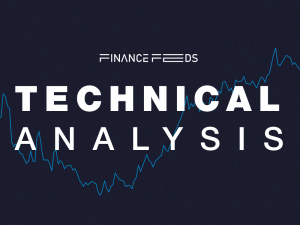CLS, IBM join efforts on proof of concept for DLT platform
Nine financial institutions, including Barclays and Citi, are participating in the proof of concept.

As novel fintech solutions penetrate deeper into the financial world, a new partnership in this area is announced today. CLS, a market infrastructure group delivering settlement, processing, and data solutions, and IBM (NYSE:IBM) have announced a collaboration on a proof of concept (PoC) for a distributed ledger technology (DLT) platform for the financial services industry. The platform, called LedgerConnect, aims to enable banks, buy and sell side firms, FinTechs and software vendors to deploy, share and consume services hosted on a shared distributed ledger network.
Via LedgerConnect financial institutions will be able to access services in areas such as know your customer (KYC) processes, sanctions screening, collateral management, derivatives post-trade processing and reconciliation and market data. The hosting of these services on a single, enterprise-grade network, organizations allows them to focus on business objectives rather than application development, enabling them to realize operational efficiencies and cost savings across asset classes.
Nine financial institutions, including Barclays and Citi, are participating in the PoC and have selected services from a number of vendors including Baton Systems, Calypso, Copp Clark, IBM, MPhasis, OpenRisk, SynSwap and Persistent Systems to participate in the PoC.
CKS and IBM note in their announcement that it can be quite costly and time-consuming for each vendor, bank, or consortium to create and operate its own unique DLT infrastructure for multiple services. LedgerConnect aims to solve this problem by offering a single shared and highly secured network on which multiple services can be deployed and consumed. This enables financial institutions to focus on transforming business processes rather than creating multiple new blockchain applications, networks and services in silos that could lead to increased interoperability costs and complexity.
Operating on a network based on the IBM Blockchain Platform and Hyperledger Fabric technology, LedgerConnect will be designed for regulated and security-conscious enterprises and available across asset classes. Support for additional ledger technologies may be provided in the future, based on market demand and developments.
Upon completion of a successful PoC, generation of market demand, and receipt of all necessary regulatory approvals, CLS and IBM plan to make the platform widely available to the industry.
The announcement is made as blockchain technologies attract extra attention from financial institutions. Early this month, Nordea announced that blockchain platform we.trade has performed its first trades. Developed by Nordea in a European-wide collaboration with eight other banks, the aim of we.trade is to create a common platform which enables companies, from SMEs to large corporates, to trade in a fast, easy and transparent way. The goal is to fully automate the trading process and seamlessly connect the entire trade ecosystem.
Many remain skeptical of blockchain’s applications in the world of finance. In June for instance, the Netherlands central bank (DNB) published the results of its tests involving blockchain. The regulator concluded hasthat blockchain is not capable to respond to the needs of financial markets infrastructure (FMI). The biggest shortcomings of blockchain, according to DNB, are inadequate capacity, inefficiency due to high energy consumption and lack of complete certainty about having made a payment. Nonetheless, it appears that the resilience of a financial market infrastructure against external attacks could be increased by the use of blockchain technology, but this happens at the expense of capacity and efficiency.









